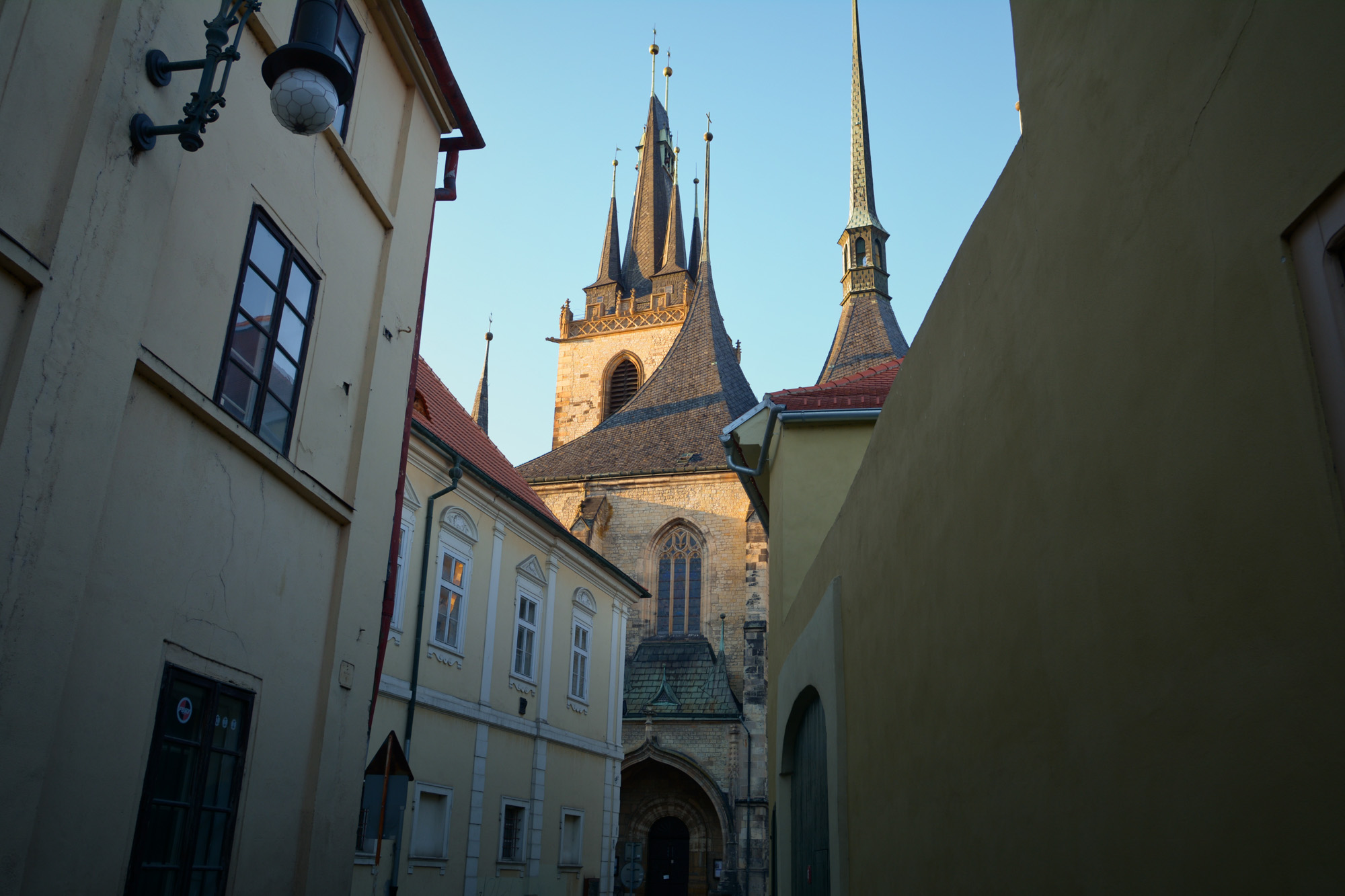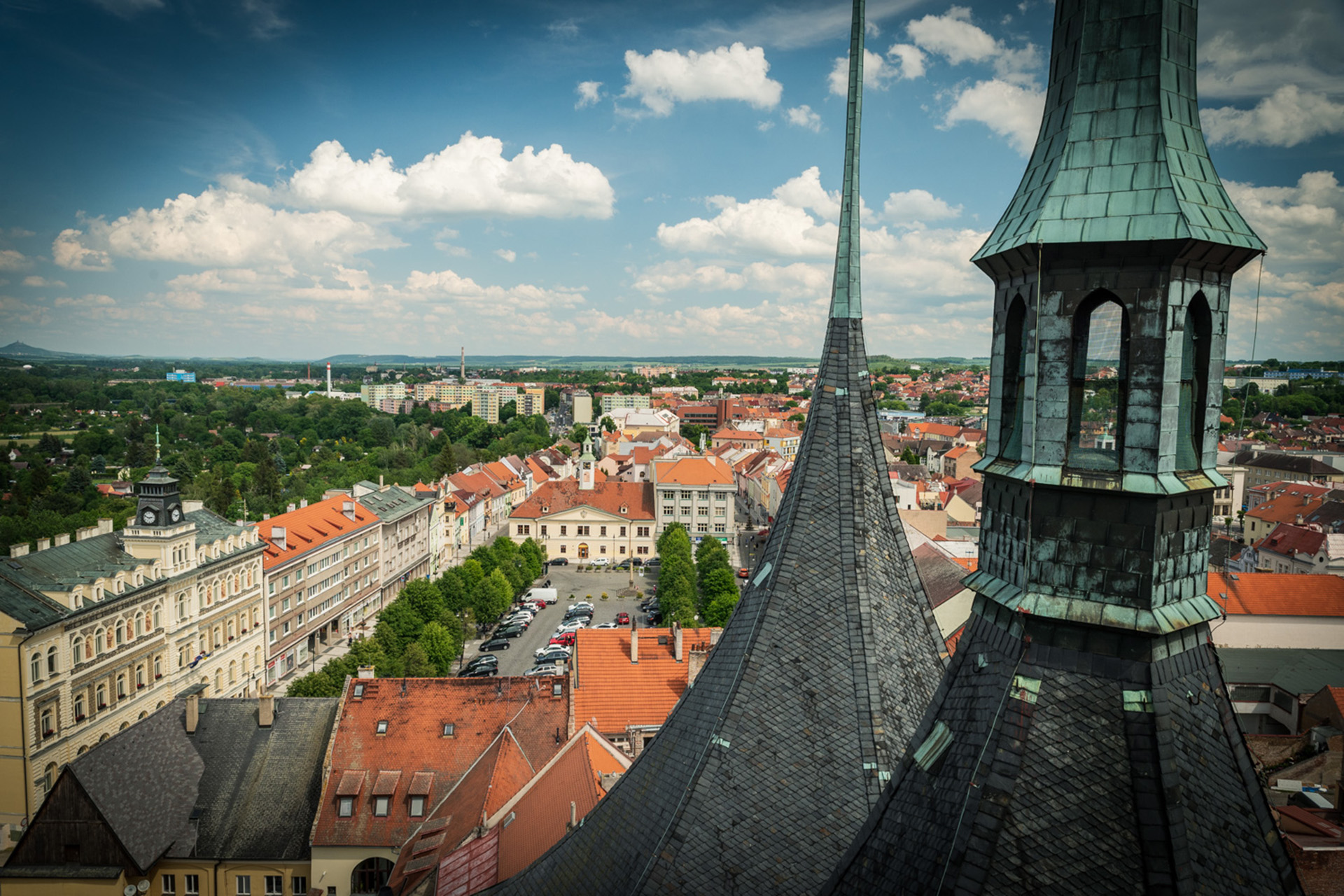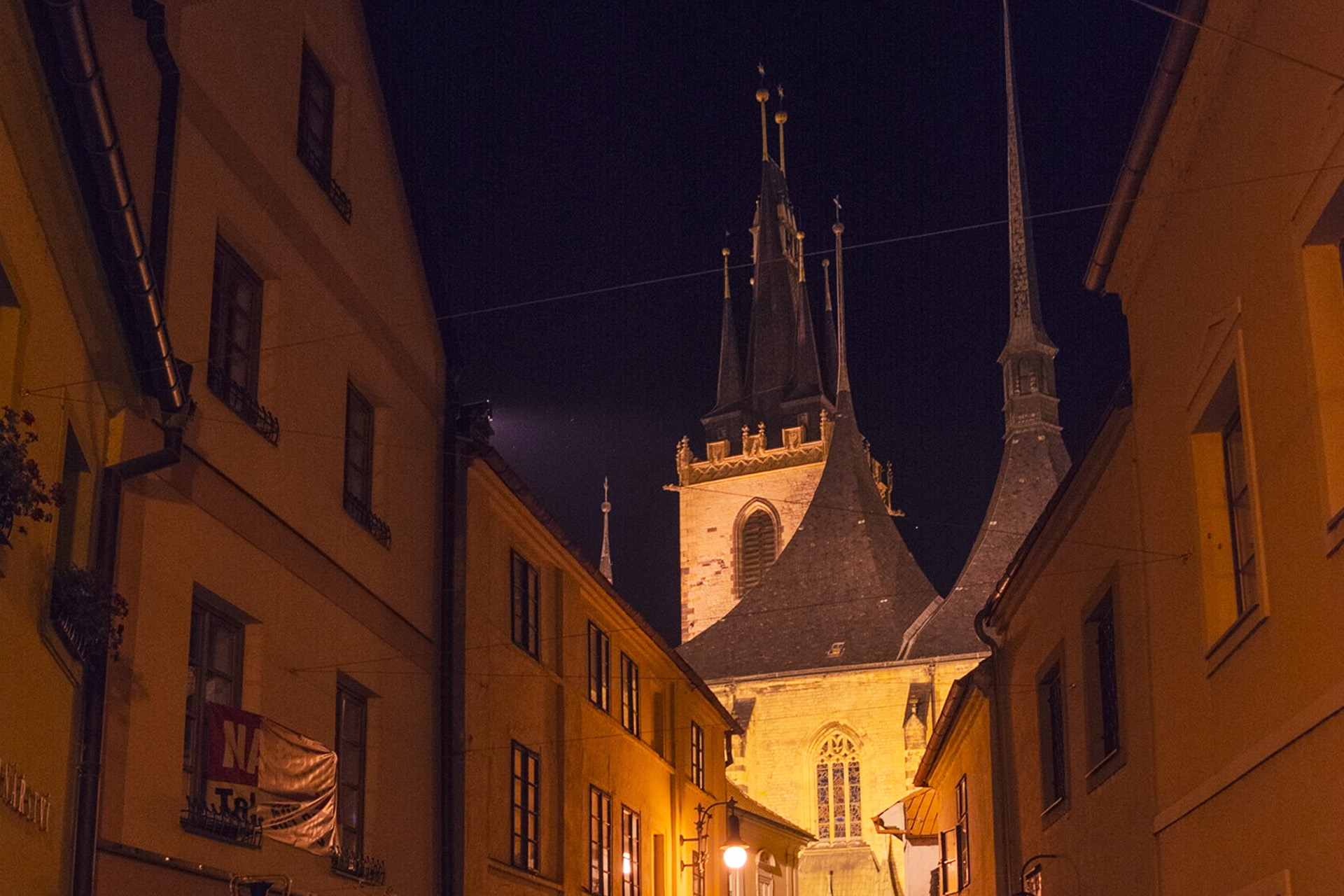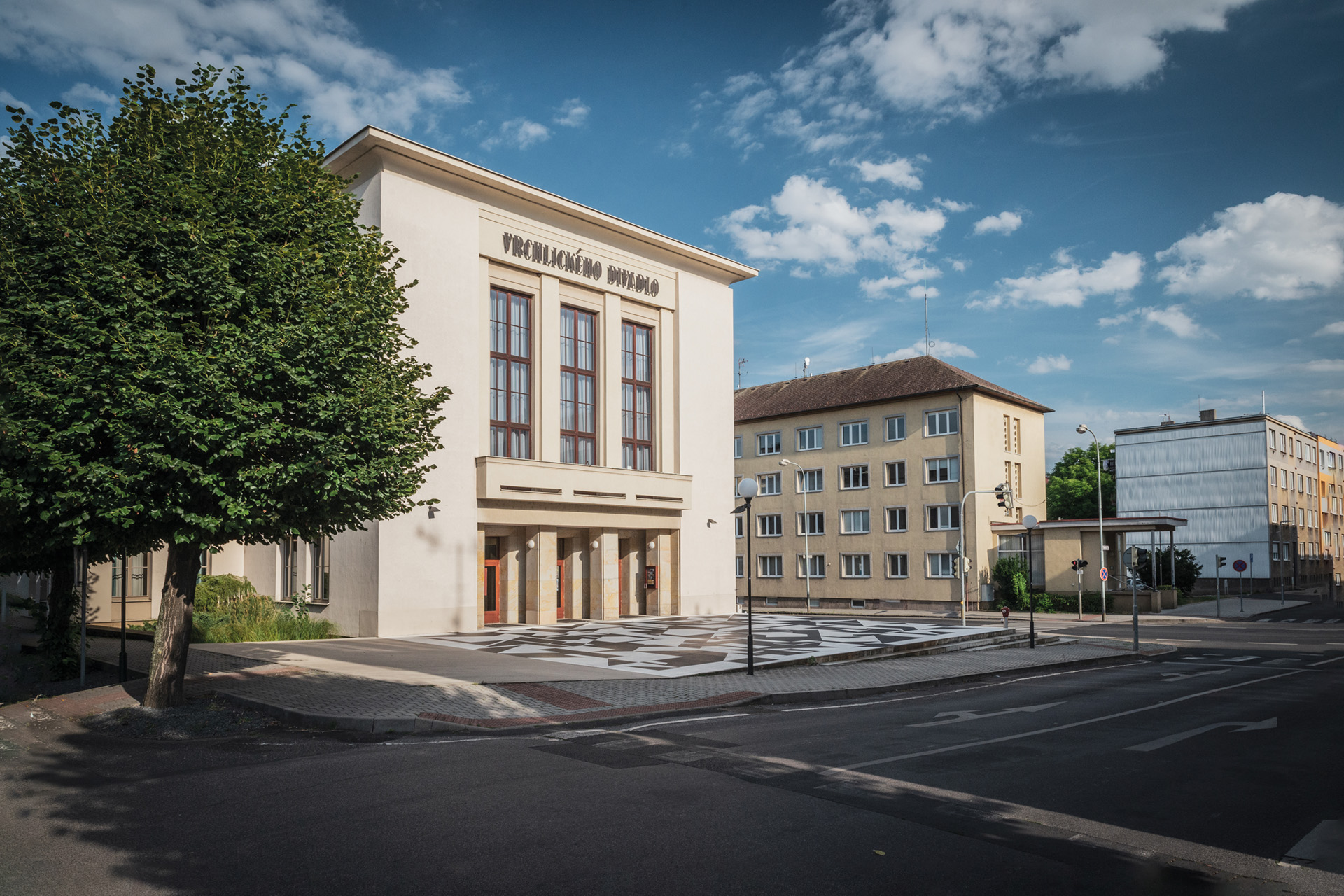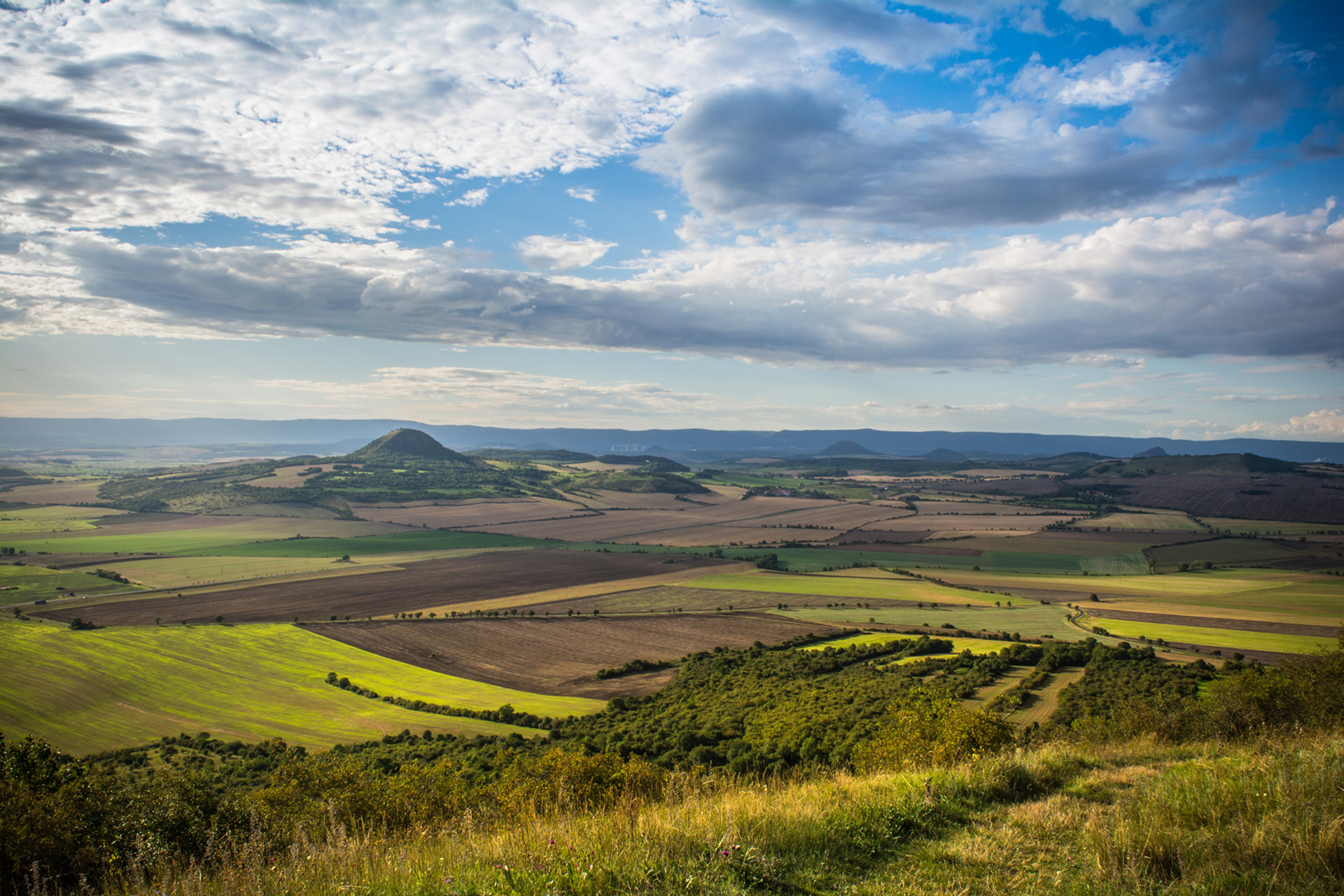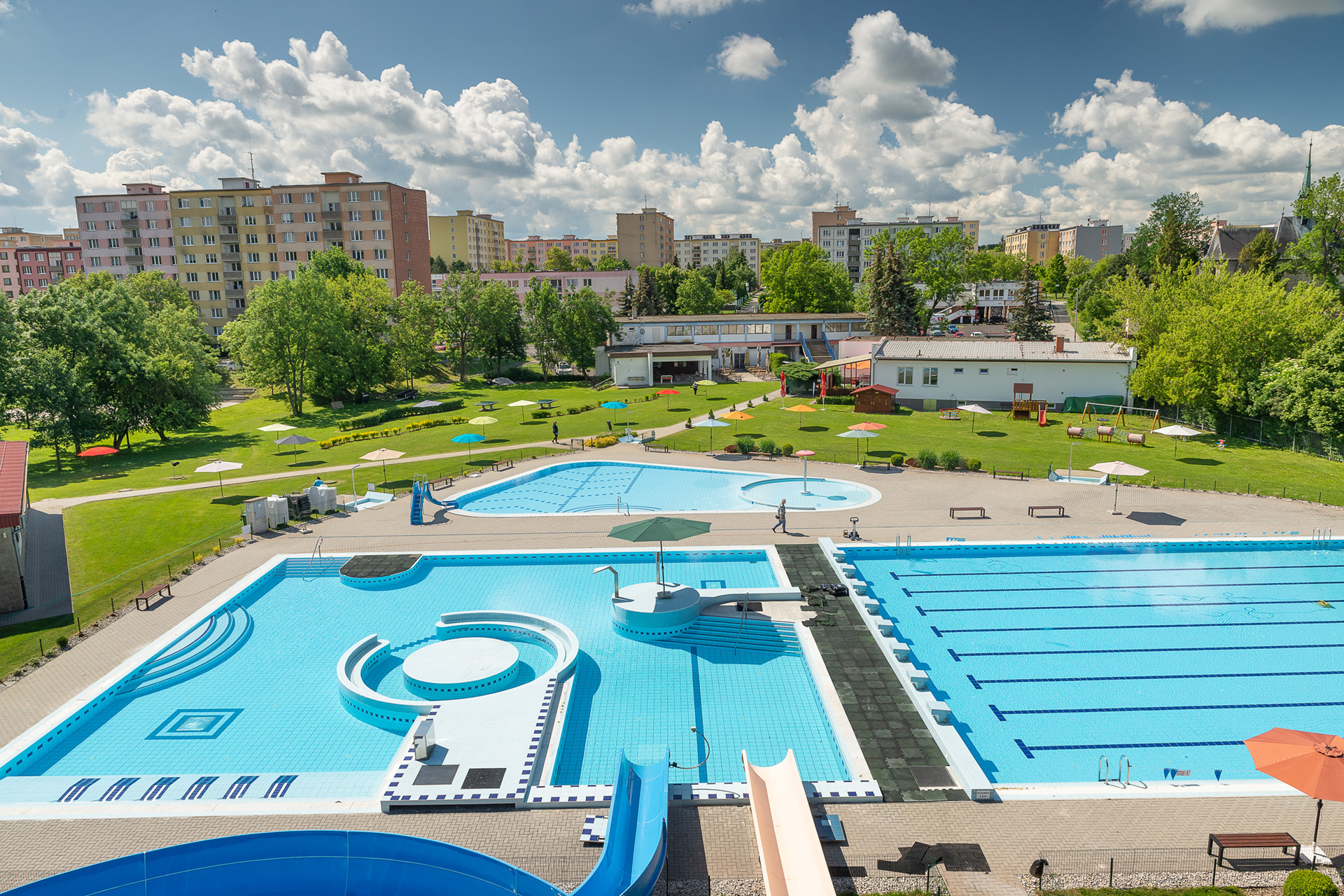Louny
Come and Fall in Love with Our Town
The first written mention of Louny dates back to 1115 when it was part of the Kladruby Monastery’s estate. This Romanesque settlement was located near today’s Church of St. Peter by the Ohře River crossing. As a royal town, Louny was established on a plateau above the river about 1 km east of the original settlement in the 1260s during the reign of Přemysl Otakar II. The town was built in an oval layout with a rectangular square and three long parallel streets. It was protected by walls with bastions and two gates – the Prague Gate and the Žatec Gate. At the same time, a Dominican monastery was founded, but it was destroyed during the Hussite Wars.
During the Luxembourg era, Louny prospered thanks to intensive craftsmanship and agricultural production, particularly grain and wine cultivation. During the Hussite Wars, Louny formed a military alliance with Žatec. In the 1420s, its commander was the renowned warrior Jakoubek of Vřesovice. Louny seized vast estates from destroyed monasteries, but under George of Poděbrady, they had to return the land. After a devastating fire in 1517, the town was rebuilt, and the new Church of St. Nicholas was constructed. In the 16th century, Louny gained fame for its town school, and viticulture flourished. During the anti-Habsburg uprising (1618-1620), Louny sided with the rebels. Shortly before the Battle of White Mountain, Albrecht von Wallenstein occupied the town, imposed a high ransom, and established his headquarters there. After the Thirty Years’ War, Louny declined to a town of local significance. In 1813, three rulers of the anti-Napoleonic coalition stayed here.
In the mid-19th century, Louny became the seat of the district office. Throughout the 19th century and again in the 1960s and 1970s, extensive demolitions took place in the town’s historic center, leading to the loss of grand Renaissance houses, the town hall, and city gates. Louny’s economic development accelerated in the second half of the 19th century, with the establishment of railway repair shops, a sugar refinery, a brewery, slaughterhouses, mills, and financial institutions. In 1896, the first secondary school – today’s Václav Hlavatý Gymnasium – was founded. Between 1872 and 1904, Louny became a railway hub, with connections to Prague, Most, Žatec, Libochovice, and Rakovník. Extensive residential development began at the turn of the 19th and 20th centuries, expanding into former agricultural land.
Further industrial expansion occurred after 1945 with the establishment of factories such as Elektroporcelán, Praga, a dairy plant, and a meat-processing plant. In the 1970s, the Žatec suburb was demolished to make way for a large prefabricated housing estate. Louny has always been located on a linguistic frontier. For example, Postoloprty, 8 km to the west, had been a German-speaking town since the 18th century. However, Louny retained its distinctly Czech character throughout its history. Since the mid-19th century, Louny has been the seat of the district office. In 1960, the Žatec and Podbořany districts were merged into it.
The Church of St. Nicholas is one of Louny’s most significant architectural monuments. The original Gothic structure dates from the 14th century, with its tower surviving from that period. The nave, built between 1519 and 1538, was designed by architect Benedikt Rejt, who was buried in the church, though his grave has not been preserved. Other religious buildings include the Church of St. Peter (14th century), the Church of the Virgin Mary (1493, with a tower from 1612), and the Church of the Fourteen Holy Helpers (1716). Churches of the Czechoslovak Hussite and Evangelical churches, built in the 1930s, are also significant.
Among medieval buildings, House No. 57 on Mírové Square retains its Renaissance gables and a wooden hall on the upper floor, now housing the district archive. House No. 43 on Pivovarská Street features a late Gothic hall with a ribbed vault and serves as an exhibition space for the regional museum. The town hall on Mírové Square was built in the Neo-Renaissance style in 1887. In modern architectural history, the railway workers’ housing colony from the early 20th century, designed by Jan Kotěra, is noteworthy. The town’s core is encircled by medieval fortifications with bastions and the Žatec Gate, largely reconstructed in the second half of the 15th century.
Useful Links and Travel Tips
Louny – the gateway to the Bohemian Central Highlands, full of history, culture, and nature. Often called the “Pearl on the Ohře River,” Louny is just 50 km from Prague and attracts visitors with its rich history, cultural events, and beautiful natural surroundings. It is an ideal destination for lovers of history, art, sports, and relaxation.
For more travel tips and attractions, visit Kudy z Nudy – Louny or the Louny Information Center.
History & Landmarks
Church of St. Nicholas – A Gothic landmark with a panoramic tower.
Žatec Gate – A medieval fortification that once protected the town.
Mírové Square – The historical center, surrounded by Renaissance and Baroque buildings.
Nový Hrad Castle in Jimlín – A picturesque castle with exhibitions and cultural events.
Culture & Leisure
Regional Museum of Louny – Exhibitions about the town’s history.
Benedikt Rejt Gallery – A collection of modern and contemporary art.
Vrchlický Theater – The cultural hub of Louny, offering concerts, plays, and events.
Svět Cinema – A modern cinema with a diverse selection of films.
Louny Municipal Library – A great place for book lovers and literary events.
Luna Spring – A historic mineral spring known for its healing properties.
Nature & Outdoor Activities
Bohemian Central Highlands – A breathtaking volcanic landscape perfect for hiking and photography.
Raná – A favorite spot for hiking and paragliding enthusiasts.
Oblík – A striking peak with unique natural features and spectacular views.
Červeňák – Stříbrný vrch – A scenic lookout tower offering panoramic views of the region.
Házmburk Castle Ruins – A medieval castle with stunning vistas of the surrounding countryside.
Ohře River Trail – Ideal for jogging, and scenic walks.
Džbán Nature Park – A peaceful woodland area perfect for nature lovers.
Koštice Natural Reserves – Beautiful trails and relaxation spots near Louny..
Sports & Relaxation in Louny
Louny Swimming Pool – A modern aquatic center with a wellness area.
Louny Sports Complex – Featuring tennis courts, outdoor fields, and a skatepark.
Cycling Routes – Scenic bike paths along the Ohře River and through the Bohemian Central Highlands.
 English
English Čeština
Čeština
